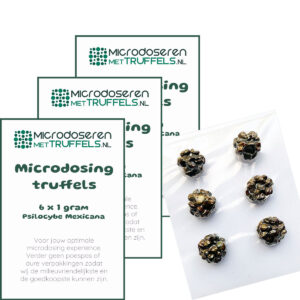Microdosing with Truffles.com | Microdosing with psychedelics
Microdosing with psychedelics
Why microdose truffles?
Microdosing with psychedelics
Psychedelics are an intriguing class of psychoactive substances that have piqued human curiosity for centuries. They are known for their ability to induce profoundly altered states of consciousness, with potentially significant implications for psychology, neuroscience and mental health. In this text, we will provide an in-depth exploration of psychedelics, their history, chemical composition, mechanisms of action and their emerging role in therapeutic applications.
Order your Microdosing Truffles Now
Top quality + lowest price
Historical perspectives
Psychedelics have a rich history in human cultures around the world. From the indigenous shamanic traditions that used Ayahuasca and Peyote, to the modern Western movement of the 1960s that embraced LSD, these substances have always played a central role in spiritual and transcendental experiences.
Chemical composition
Psychedelics include a wide range of compounds, such as tryptamines for example psilocybin (truffles and magic mushrooms), DMT (Ayahuasca), phenethylamines (mescaline) and lysergamides (LSD). These compounds often share a common structure closely related to neurotransmitters such as serotonin.
Mechanisms of action: serotonergic system
Most psychedelics, such as psilocybin, LSD and DMT, exert their effects by interacting with the serotonergic system in the brain. They bind to specific serotonin receptors, primarily the 5-HT2A receptor, resulting in disruptions of normal neurotransmission patterns. This makes it possible to look at the world and yourself differently.
Mechanisms of action: increased neural connectivity
Recent research suggests that psychedelics can increase functional connectivity in the brain, which can lead to increased communication between different brain regions. This may explain why psychedelics are associated with experiences of enhanced unity and depth.
Psychological effects
Changed perception
Psychedelics are known for their ability to drastically alter perceptions of time, space, color and shape. This can lead to visual and auditory hallucinations, as well as an intensification of emotional experiences.
Emotional breakthrough
Many users report a profound emotional experience, often characterized by a sense of oneness with the world, deep empathy and a sense of awe for life.
Therapeutic potential of psilocybin
Recent clinical studies conclude that psychedelics may show promise in treating conditions such as depression, post-traumatic stress disorder (PTSD) and addiction. They can help break entrenched thought patterns and increase understanding of the self.
Psychedelics represent an exciting area of research with significant potential for mental health and the human experience. Although much remains to be discovered, the growing pile of scientific evidence points to a promising future for these intriguing substances.


